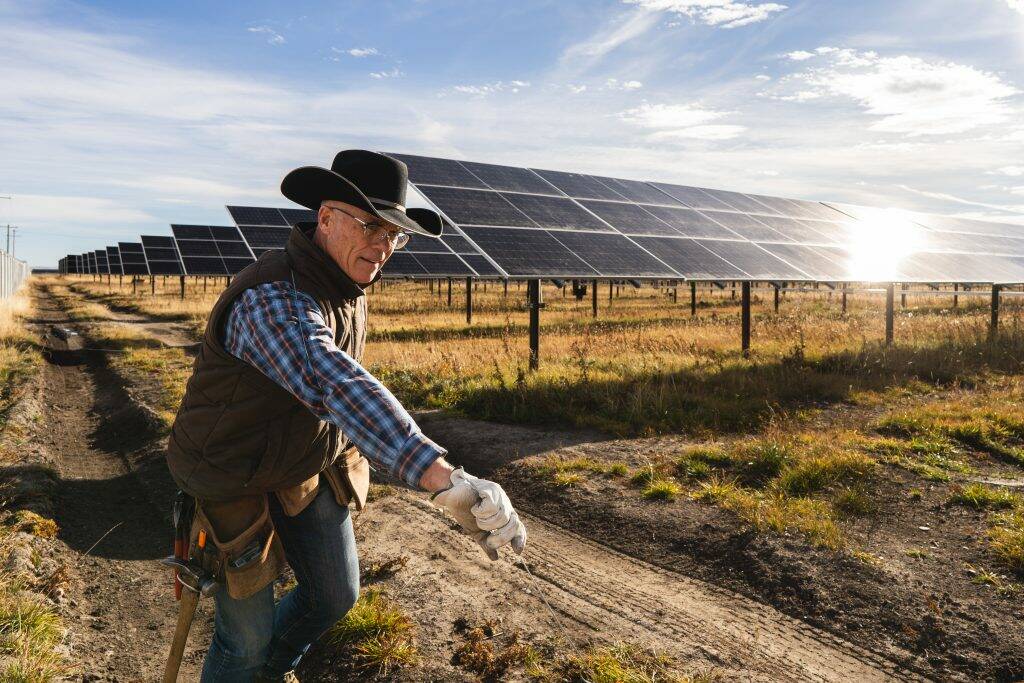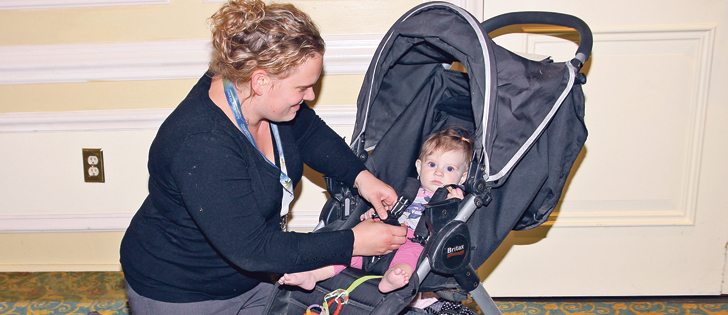Karen Morrison reports from the recent Advancing Women leadership conference held in Toronto.
“Why are so many women at the Royal York driving pick-up trucks?” one presenter joked during the Advancing Women leadership conference in Toronto earlier this month.
“We’re here to learn and inspire each other and learn to be good leaders,” said dairy farmer and school teacher Janelle Bennett from Mildmay, Ont., who brought her baby and her team of female barn workers to the life skills for leadership-women in agriculture presentations.
Read Also

Support needed at all levels for high-value solar projects
Farmers, rural municipalities and governments should welcome any opportunity to get involved in large-scale solar power installations, say agrivoltaics proponents.
She was interviewed while rocking eight-month-old Kelsey in her stroller in the corridors of the opulent Royal York. There, more than 400 women gathered from farms and agribusinesses to weigh in on topics such as social media, healthy living and procrastination.
Bennett, who is part of a large family farm and mother of three children younger than five, is well versed in time management.
She pointed to her mother, Jayne Dietrich, as her role model, a former Outstanding Young Farmer recipient and president of the local county’s federation of agriculture.
“We’re picking up parts, rushing around,” she said.
“We’re quick, efficient — not only am I running to grab those things, but I’m buckling three kids into car seats to do it and working around naps or lunch to do it.”
Deb Stark, Ontario’s deputy minister of agriculture, said women have always been the backbone of agriculture, co-ordinating family life and taking care of the details.
“They were leaders in a low profile way,” she told delegates.
For the future, she would like to see more women in leadership positions in the agricultural industry but conceded there are still many barriers in their way.
The Canadian Agricultural Human Resource Council’s Supporting the Advancement of Women in Agriculture project found that obstacles include balancing career and family, breaking into the old boys club and a lack of role models.
It found that half of women surveyed identified barriers preventing them from advancing into leadership, compared to only 14 percent of the men.
In addition, a woman living in a rural area has added challenges, such as remoteness of location, access to training, managing the traditional tasks of child rearing and supporting her husband and male farm workers and pursuing off-farm income.
Stark said women need access to high speed internet to participate fully, along with meetings that accommodate strollers.
She said women bring a nuanced view to issues and skills in collaboration and are more likely to see agriculture not just as an economic driver but as part of Canada’s social fabric.
They could play an important role on agricultural boards and in policy development for Growing Forward 3, she said.
“There’s huge gains to be made with women fully engaged,” said Stark, citing their interest in food security, support for communities, risk management and food production. “There may be more women in the room, but they are not quite all at the table.”
Jeannette Mongeon, a rabbit breeder and soybean and corn producer from Embrun, Ont., agreed.
“There should be more people at the table that can offer more insight when they are making laws,” said Mongeon.
She would like Canada to be more autonomous in food production, saying increased production and processing could mean more jobs.
She wants to chart food produced in Canada, determine what’s missing and build on those areas.
“If you can’t measure it, you can’t manage it,” she said.
Her advice to women tackling the big issues is to come together well prepared, avoid speaking from emotion and have the confidence to be heard.
Stark floated the idea of a national voice for women.
“There is a lot of evidence of boldness in women, of knowing what needs to be done and getting it done and empowering and inspiring others to get it done,” she said.
She pointed to the Federated Women’s Institutes of Canada for those seeking one possible platform to come together.
“I think it’s a little bit of a sleeper out there,” she said. “If women really want to come together and have a common message, maybe that table’s already set.”















